Human Orbital Spaceflights
![]()
International Flight No. 244Soyuz TMA-8CaratRussia |
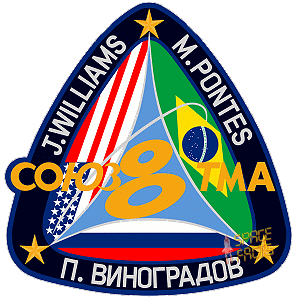 |
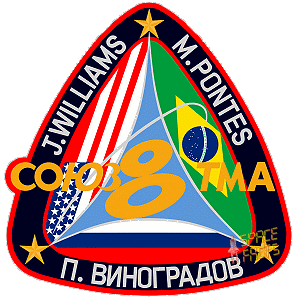 |
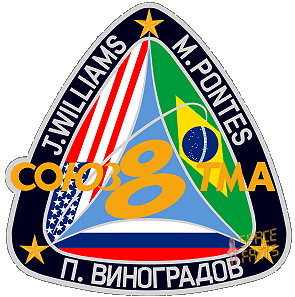 |
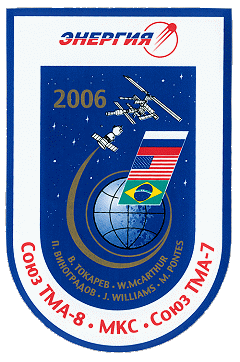 |
|
![]()
Launch, orbit and landing data
walkout photo |
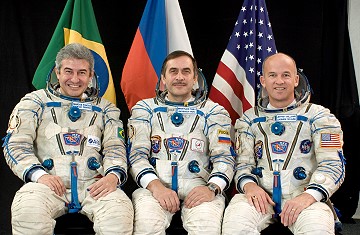 |
|||||||||||||||||||||||
alternative crew photo |
alternative crew photo |
|||||||||||||||||||||||
alternative crew photo |
||||||||||||||||||||||||
alternative crew photo |
||||||||||||||||||||||||
Crew
| No. | Surname | Given names | Position | Flight No. | Duration | Orbits | |
| 1 | Vinogradov | Pavel Vladimirovich | Commander | 2 | 182d 22h 43m 17s | 2886 | |
| 2 | Williams | Jeffrey Nels | Flight Engineer | 2 | 182d 22h 43m 17s | 2886 | |
| 3 | Pontes | Marcos Cesar | Spaceflight Participant | 1 | 9d 21h 16m 52s | 155 |
Crew seating arrangement
|
 |
|
||||||||||||||||
Backup Crew
|
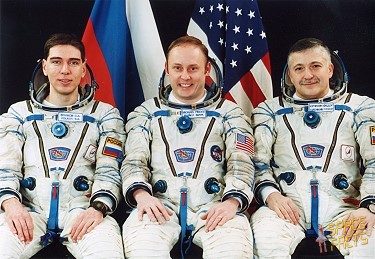 |
||||||||||||||||||||
alternative crew photo |
Hardware
| Launch vehicle: | Soyuz-FG (No. 5M133S P15000-018) |
| Spacecraft: | Soyuz TMA-8 (TMA No. 218) |
Flight
|
Launch from the Baikonur Cosmodrome and
landing 92 km north of Arkalyk. Marcos Pontes became the first astronaut from Brazil. This mission carried out the ISS Expedition 13. Following a two-day solo flight Soyuz TMA-8 docked to ISS on April 01, 2006. Pavel Vinogradov and Jeffrey Williams replaced the Expedition 12 crew. The Missão Centenário started after a deal of between the Brazilian Space Agency and Roscosmos in October 18, 2005. Its main goal was to make possible the flight of Marcos Pontes, the first Brazilian in space. The Missão Centenário costed US$10 million for the Brazilian Space Agengcy (or R$ 10,000 by Brazilian by the year of 2010) and happened during the Brazilian participation in the ISS Program. The name is in reference the celebration from the centennial of the 14-Bis flight of Santos-Dumount in Paris, October 23, 1906. During his mission, Marcos Pontes executed 8 Brazilian experiments: - Microgravity Enzymes Kinetics (FEI): its goal was to study the micro gravity effects in two enzymes: Lipase and Invertase. Each enzyme was tested in different levels of reagents with a total of 15 mixings; - DRM - DNA Repair in Microgravity (UERJ and INPE): Investigation of the Effects of High Levels of Radiation on DNA Repair Mechanisms in Microgravity; - Capillary Evaporator in Microgravity (UFSC): The experiment consists of a capillary evaporator mounted on a biphasic heat transfer circuit using de-ionized water as the working fluid. It is designed for application oriented to the cooling of satellites or of space probes. One main result was that the equipment worked in micro gravity in the same way as in the Earth, making possible to conclude that it can be used for thermal control in micro gravity hardware. - MHP - Mini Heat Pipe (UFSC): Device developed for allow the flow of high levels of temperature, even when under a small level of temperature. - GSM - Germination in Microgravity (EMBRAPA): the goal was to evaluate the micro-gravity, illumination and radiation effects in seeds of Astronium fraxinifolium/schott. - NIP - Protein Interaction Clouds (CenPRA/MCT): its goal was to study the interaction of atomized bio-luminescent enzymes in micro gravity. - Germination of common bean seeds (Secretaria Municipal de Educação de São José dos Campos-SP): the experiment evaluated the defects of water, light and micro gravity on the germination of beans seeds (Phaseplus Vulgaris). Was executed in sync between the ISS and four municipal schools in São José dos Campos. The main goal was to make the students participate with interest in the experiment, what really happened. - Observation of the Chlorophyll Chromatography Process in Weightlessness (Secretaria Municipal de Educação de São José dos Campos-SP): also executed with the schools, the goal was to observe the separation of the pigments from the leaf of Brassica oleracea through chromatography and see the results side with the school experiments in São José dos Campos. The Soyuz spacecraft is composed of three elements attached end-to-end - the Orbital Module, the Descent Module and the Instrumentation/Propulsion Module. The crew occupied the central element, the Descent Module. The other two modules are jettisoned prior to re-entry. They burn up in the atmosphere, so only the Descent Module returned to Earth. The deorbit burn lasted 261 seconds. Having shed two-thirds of its mass, the Soyuz reached Entry Interface - a point 400,000 feet (121.9 kilometers) above the Earth, where friction due to the thickening atmosphere began to heat its outer surfaces. With only 23 minutes left before it lands on the grassy plains of central Asia, attention in the module turned to slowing its rate of descent. Eight minutes later, the spacecraft was streaking through the sky at a rate of 755 feet (230 meters) per second. Before it touched down, its speed slowed to only 5 feet (1.5 meter) per second, and it lands at an even lower speed than that. Several onboard features ensure that the vehicle and crew land safely and in relative comfort. Four parachutes, deployed 15 minutes before landing, dramatically slowed the vehicle's rate of descent. Two pilot parachutes were the first to be released, and a drogue chute attached to the second one followed immediately after. The drogue, measuring 24 square meters (258 square feet) in area, slowed the rate of descent from 755 feet (230 meters) per second to 262 feet (80 meters) per second. The main parachute was the last to emerge. It is the largest chute, with a surface area of 10,764 square feet (1,000 square meters). Its harnesses shifted the vehicle's attitude to a 30-degree angle relative to the ground, dissipating heat, and then shifted it again to a straight vertical descent prior to landing. The main chute slowed the Soyuz to a descent rate of only 24 feet (7.3 meters) per second, which is still too fast for a comfortable landing. One second before touchdown, two sets of three small engines on the bottom of the vehicle fired, slowing the vehicle to soften the landing. |
Note
Photos / Graphics
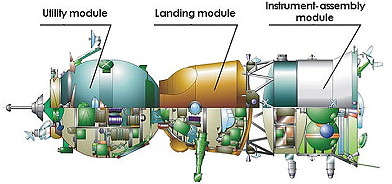 |
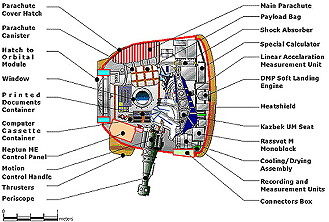 |
 |
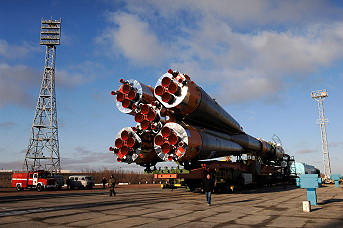 |
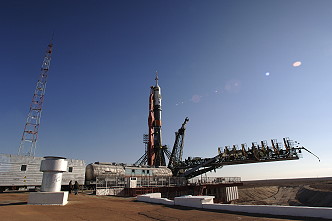 |
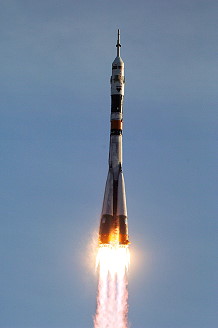 |
 |
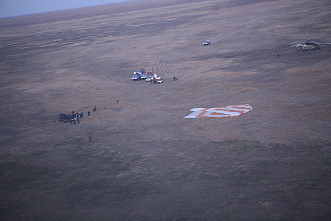 |
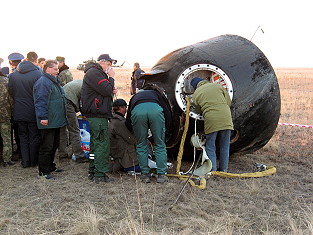 |
| © |  |
Last update on April 02, 2025.  |
 |